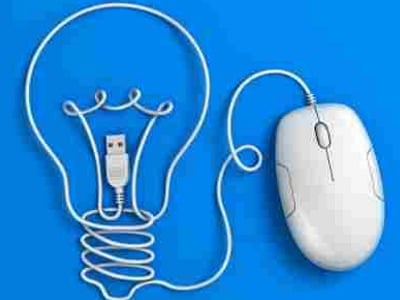 Here Kerridge will be discussing the cutting-edge technology of the 1870s. Why on earth is this relevant?
Here Kerridge will be discussing the cutting-edge technology of the 1870s. Why on earth is this relevant?
Before you hit that back button, hear me out; we can learn a lot more from nineteenth century manufacturing than you may think.
I’m not suggesting that you rip out your existing machinery and install a bulky, steam-driven system from years gone by — that would be ludicrous. However, while technology has changed, manufacturing today is still encountering the same problems as it was nearly 150 years ago. Most prominent is the difficulty in embracing new technology.
So, with this in mind, let’s start from the beginning…
The past
Following the invention of the light bulb in the late 1870s, electricity became the latest emerging trend — the equivalent of a new piece of software or machinery these days. By 1882, electric motors were being used for the first time in manufacturing.
However, by 1900, less than 5% of American manufacturing was driven by electricity, with many still relying on steam power — but why?
Electricity was heralded as the new driver of industry, but many manufacturers simply didn’t know how to incorporate it into their operations. While electric motors could simply slot in and replace the existing steam engine, factories were simply not ready for the associated changes it would bring about.
Electricity was ready to make factories more efficient, driving power only where it was needed through efficient machinery. Workers’ roles would change; they would become more autonomous as systems became more intelligent. The overall production process would shift, reliant not on the direction of the driveshaft but based around a logical approach to production.
From worker’s pay to training and production processes, the changes brought about by implementing electric systems were numerous. Many manufacturers were overwhelmed, deciding against implementing electric systems in the hope that they could cling onto their past production methods and survive through stagnation.
This wasn’t the case. Change was unavoidable and eventually, all manufacturers switched to electricity. Those who switched early had the advantage of already having the systems in place, meaning it was business as usual for them while others played catch up.
Manufacturing ERP Technology…The present
The experiences of manufacturers in the nineteenth century are very similar to what manufacturers are experiencing now — only today, we’re not choosing between electricity and steam power. It’s everything from Internet of Things-connected devices to implementing ERP software and updating systems.
The technology and the decisions we’re making has changed, but one thing remains consistent: manufacturing is decidedly split. There are those who stay at the forefront and embrace new trends, and those who cling onto past production methods in the hope the trend will pass them by — and it never does.
So how can we avoid following in the footsteps of those nineteenth century manufacturers who buried their head in the sand until change was forced upon them? Below are some of the main challenges of technology integration in manufacturing today, and how you can overcome them:
Staff training
The implementation of any major new manufacturing technology will always have an impact on your business, changing the way you operate. If it doesn’t, you may well have invested in something you don’t need.
Of course, to ensure the systems and tools are used correctly, you’ll need to ensure employees are fully trained to use them. Factor in any associated costs of this training when making your decision, to avoid any surprise costs further down the line.
There is no point implementing a system if you’re not going to fully benefit from it, so bringing staff in-line with the new way of working should not be an after-thought.
Cost
Often, one of the biggest hurdles manufacturers need to overcome is the costs associated with implementing a new technology. From the initial outlay for the software or machinery to maintenance costs, there’s a lot to consider.
However, you shouldn’t let this factor stagnate your business. While the cost of technological change may be high, what is the wider cost of not implementing the technology? Will you be able to keep up with your competitors? Will the decision limit your business and the markets you can operate in?
Carefully weigh up the implementation cost against the benefits the technology will bring. If they outweigh the costs, it could be a clear signifier of what you need to do.
How will you drive your manufacturing business forward if you don’t embrace change?
Security
As we have mentioned, it’s the prospect of change against the familiarity of old systems that some manufacturers aren’t comfortable with. Not only are new systems unfamiliar, they could be potentially insecure, given their newness.
It’s actually the other way round. Technology is becoming smarter with each new development. Sticking with outdated systems could leave your business vulnerable, as providers discontinue updates and support for older systems. By moving with the times and putting the correct security processes in place, you can safeguard your business.
As you can see, we have more in common with the manufacturers of the nineteenth century than you may have first thought. Technology has changed but the underlying message remains the same: how will you ever drive your business forward if you don’t embrace change?
If you would like to integrate new technology within your business contact us and one of our business experts will be happy to offer advice. From an ERP ‘health check’, a new ERP system or Internet of Things technology—we’re here to help. If manufacturing technology improvements are on your agenda, get in touch.








